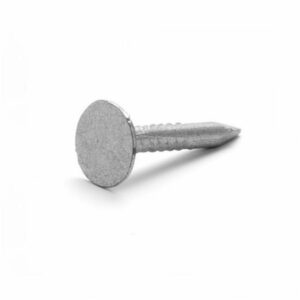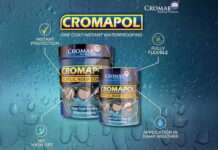Shed Felt is an extremely popular and common choice for roofing sheds, doghouses and similar buildings. Since it can be cut and nailed in using normal tools it’s an extremely common choice for DIY projects. However, it can’t be nailed in with just any nails. Special nails need to be used.
Shed Felt Nails
These nails are called shed felt nails and sometimes clout nails. They usually have the following qualities:
- They are made of a water-resistant metal, such as copper or galvanised steel
- They have extra large heads
- They have short, squat shanks
Metal
Since the nails will be exposed to the elements it’s important that they are made of a water-resistant metal. Copper can be a good metal for these sorts of nails, for instance. But in general, to combine water resistance and strength at an affordable price there’s no beating galvanised steel. This is steel that has been covered in a layer of zinc. The steel provides strength, the zinc protects the steel from being rusted by water.
Extra Large Head
An extra large head (or ELH) nail is excellent for shed felt because it combines a low profile with excellent clamping. This will allow the nails to hold the felt as strongly as possible, while resisting wind uplift. Whereas smaller head nails might be able to completely sink into the substrates, they simply wouldn’t provide the necessary coverage to hold on to the felt. The flat nature of the fixing allows it to remain relatively inconspicuous and doesn’t alter the roof’s profile.
Shank
The shank is the part that actually penetrates the felt and the timber. The shanks of shed felt nails tend to be short and often relatively wide as well as ridged, allowing it to grip the timber after it has been driven in. For instance, at ERoofing we sell 25mm and 20mm shed felt nails. Since this is an exterior nail where forces are going to be acting on it, making sure it is resilient is important.
These are the factors that make up the sorts of clout nails you would use with shed felt. It’s definitely worth investing in proper nails when installing your shed felt to make sure it’s securely attached and reduce the risk of damage or the felt being removed completely.







